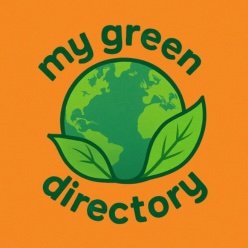How to Create Evergreen Content on Environmental Issues: Learn how to create impactful evergreen content on environmental issues that educates, inspires, and drives long-term organic traffic for your sustainable content strategy.
Evergreen content is the backbone of a sustainable content strategy, especially for environmental topics that require ongoing education and inspire long-term action. By creating content that remains relevant and valuable over time, you can build trust, authority, and organic traffic while supporting real-world change. Here’s your guide to help you create impactful evergreen content on environmental issues.
🌱 1. Understand What Makes Content “Evergreen”
- Lasting relevance: Evergreen content stays useful and accurate long after it’s published, unlike news or trend-based posts. For environmental issues, this could include how-to guides, beginner’s resources, and in-depth explainers on sustainability topics.
- Educational value: Focus on content that educates and empowers readers, such as guides to reducing carbon footprints, sustainable farming practices, or zero-waste living (Compose.ly).
📝 2. Choose the Right Evergreen Formats
- How-to guides: Step-by-step instructions for eco-friendly habits (e.g., composting, water conservation, sustainable travel) are always in demand (Compose.ly).
- Beginner’s guides: Introduce foundational concepts like climate change, renewable energy, or ethical consumerism (okwrite).
- Case studies: Highlight real-world examples of businesses or communities adopting greener practices to educate and inspire (okwrite).
- Pillar pages/cornerstone content: Create comprehensive resources that link to related articles, building your site’s authority and SEO (okwrite).
- FAQs: Address common questions about recycling, energy efficiency, or sustainable living.
🔍 3. Optimize for Sustainability-Focused SEO
- Keyword research: Use tools to find eco-friendly keywords that match your audience’s intent, like “how to reduce food waste” or “sustainable home upgrades” (okwrite).
- On-page optimization: Naturally include keywords in titles, headers, image alt text, and metadata to boost search visibility ([okwrite], [Augurian]).
- Update regularly: Review and refresh your evergreen content to ensure accuracy and maintain rankings.
🤝 4. Build Trust with Authenticity
- Be transparent: Share your sustainability goals, progress, and even challenges. Audiences value honesty over perfection (okwrite).
- Use credible sources: Reference trusted organisations, scientific studies, and real data to back up your claims (okwrite).
- Partner with experts: Collaborate with environmental professionals or organizations to enhance credibility.
🎨 5. Make Content Engaging and Accessible
- Visuals: Add infographics, diagrams, and videos to simplify complex topics and boost engagement (Augurian).
- Lists and step-by-steps: Use bullet points and numbered lists for easy reading and voice search compatibility (okwrite).
- Internal linking: Connect related evergreen articles to keep readers on your site and improve SEO.
✅ Evergreen Environmental Content Checklist
- 🌱 Focus on lasting, educational topics
- 📝 Use guides, case studies, pillar pages, and FAQs
- 🔍 Optimize for sustainability keywords and update regularly
- 🤝 Build trust with authenticity and credible references
- 🎨 Engage with visuals and clear structure
“Evergreen content helps build trust, reduce waste, and support a more ethical, eco-friendly future. It keeps your brand voice in meaningful climate conversations and attracts organic traffic for months or years.”
— Compose.ly
Check out who’s listed products on MyGreenDirectory…
References:
- Compose.ly: Evergreen Content Examples
- okwrite: How to Build a Sustainable Evergreen Content Strategy
- Augurian: What Is Evergreen Content?
- StoryBase: What is Evergreen Content?
Disclaimer
Content on MyGreenDirectory.com is for informational purposes only and may include affiliate links, which earn us a commission at no extra cost to you —helping support our mission to promote green living.. We only recommend products and services that align with our sustainable values. While we aim to highlight sustainable businesses, products, and services, we encourage all users to independently verify claims, certifications, and practices before making any decisions or purchases. This site is not a substitute for professional advice—please consult experts for health, legal, financial, or environmental decisions. Use the information at your own risk. We aren’t liable for any damages from using this site.









Comments